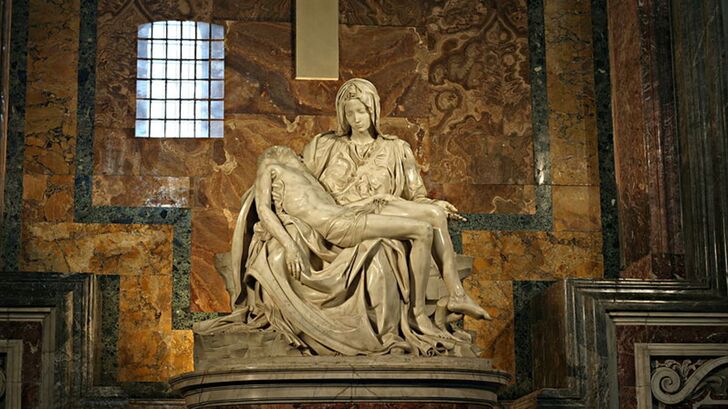Whether through painting, poetry, music, or stories, artists have always expressed their true feelings and emotions in their artwork. Even now, you can find masterpieces that depict stories of the past and that is the beauty of art in and of itself.
However, some artists have been quite sinister and mysterious with their art and the message they intended on conveying through it, which is why there are a lot of paintings that supposedly contain hidden messages.

Pexels | Art is the language through which artists speak
The truth behind these paintings now only belongs to the painters who once created them and the people who now own them. Though there is no confirmation regarding how accurate these conspiracy theories actually are, they are fun to read about nonetheless.
1. The Arcadian Shepherd
Created by Nicolas Poussin in 1639, this painting shows three shepherds, accompanied by a woman, standing beside a tomb that has a Latin inscription on it that translates to ‘Even in Arcadia I exist.’ Arcadia happens to be a region in Greece that is seen as a mythical paradise. The simple and straightforward meaning behind this painting is the inevitability of death. However, theorists believe that there is more to it than meets the eye when it comes to The Arcadian Shepherd. They believe that the inscription is an anagram which, in reality, says ‘Tego arcana Dei’ a phrase that when translated to English, says ‘Begone, I keep God’s secrets!’ and because of this hint, theorists believe that this painting shows the tomb wherein the remains of Jesus Christ lie.

RLC Research | They even managed to locate the tomb in a French town called Les Pontils
2. The Pietà
This sculpture was created during the renaissance by Michelangelo. It stands at a height of 174 centimeters and depicts Mary cradling the body of Jesus in her lap after the crucifixion. You can witness this amazing work of art if you visit the St. Peter’s Basilica in Vatican City. Despite its blatant reference to Jesus and the Virgin Mary, some people believe that it is not her but instead, one of Jesus’ companions named Mary Magdalene. The clue comes from the fact that the woman in the sculpture looks quite young and that the prototype of the sculpture includes a cupid as well, which wouldn’t make sense if the sculpture is based on the relationship between a mother and son.

Wikimedia Common | Seems pretty legit, if you ask us
So, do you believe these theories are real, or do they sound completely far-fetched?

